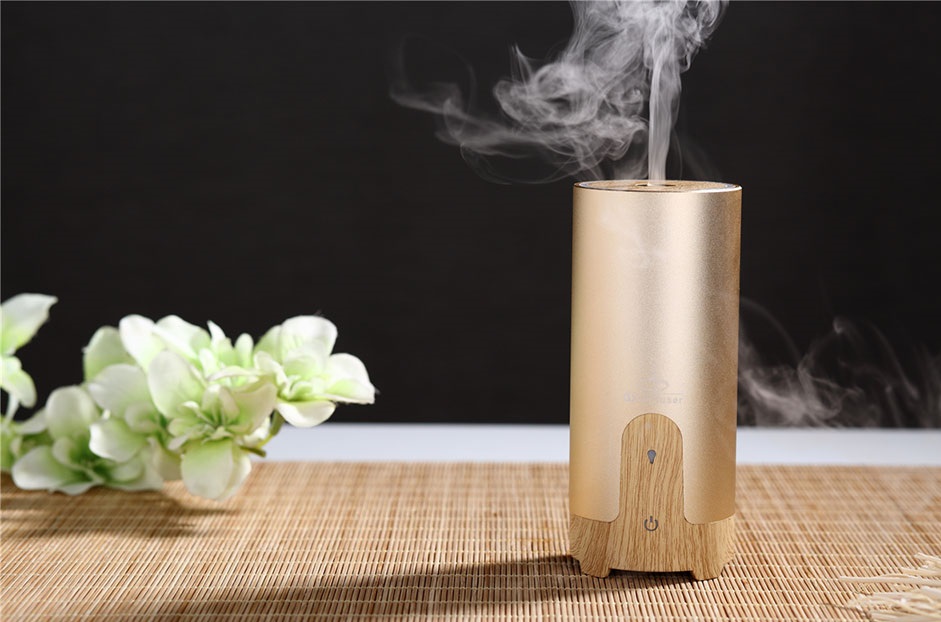How to Use a Diffuser for Essential Oil
Lately, you’ve been thinking about aromatherapy. You’ve been curious about diffusing essential oils. Perhaps you have questions like, “Is it worth it to get a diffuser?” and “How do I use a diffuser for essential oils?”
In response to the first question above, our answer is yes, it’s a great idea to buy a diffuser. It’s the most efficient way to put essential oils in the air for therapeutic benefits. Get one of the best essential oil diffusers, whether it’s nebulizing or ultrasonic, and you’ll see what we mean.

What’s the difference between ultrasonic and nebulizing diffusers? Nebulizers use more oil for an intensely aromatic experience, and they don’t require water. Ultrasonic diffusers mix water and a few drops of oil to create a scented cool mist. Both types of device are practical for different reasons. Now let’s discuss how to use them.
Nebulizing diffuser
Nebulizers are the most powerful diffusers available. They use an electric pump to atomize and expel tiny particles of essential oil into the air. Some nebulizers come with timers, and many will allow you to adjust the quantity of vapor.
Since nebulizers don’t heat lamp or dilute the oil, you’ll get the full therapeutic effect. They also don’t add humidity to the air.
To use a nebulizing diffuser, add 10 to 25 drops of essential oil to the glass reservoir. You can blend oils; you are limited to using just one at a time. For example, try lavender, chamomile, and bergamot for sleeping.
Next, adjust the flow of vapor and the timer if you desire. Generally speaking, you won’t need to run a nebulizer for more than 20 to 30 minutes at a time. And a timer can help you set up the device to work once an hour, or less often if you like.
Here are some guidelines for how long a scent will last:
- Myrrh, ginger, and cedar are strong scents that last for hours, and sometimes days
- Geranium, Rosemary, and chamomile generally last from 2 to 4 hours
- Lavender, peppermint, and eucalyptus fade away within an hour
Once you’ve finished using the nebulizing diffuser, be sure to clean the reservoir thoroughly. Normally rubbing alcohol removes the oily residue.
Ultrasonic diffuser
An ultrasonic diffuser usually has a plastic reservoir that you’ll fill with water and 3 to 5 drops of oil. Many models have a built-in timer and a way to adjust the quantity of mist they produce.
The benefit of an ultrasonic diffuser is that it adds humidity to the air, which is convenient if you live in a dry climate or need to clear clogged nasal passages. Any oil you can diffuse a nebulizer is one you can put an ultrasonic diffuser. The difference is the intensity of the aroma and the quantity of oil you’ll use.
Once you’ve finished using the diffuser, be sure to clean the reservoir and let it dry thoroughly. The manufacturer should include specific instructions on how to accomplish this.
Which essential oils to diffuse?
If you’re curious about which essential oils to diffuse, here are some suggestions to try. You can find recipes for blends online.
- Purify the air in your home with lemon, tea tree oil, wild orange, or grapefruit
- Wind down the day and relieve stress with lavender, ylang-ylang, clary sage, or cedarwood
- Relieve respiratory distress with eucalyptus, peppermint, or clove
- Create holiday cheer with cinnamon
Scientific studies support the fact that aromatherapy alleviates stress and depression and speeds up healing.
Conclusion
You’ll create an aromatic and therapeutic space around you when you diffuse essential oils. It’s not hard to find diffusers at accessible prices. They are easy to operate and maintain. And the benefits can change your life.